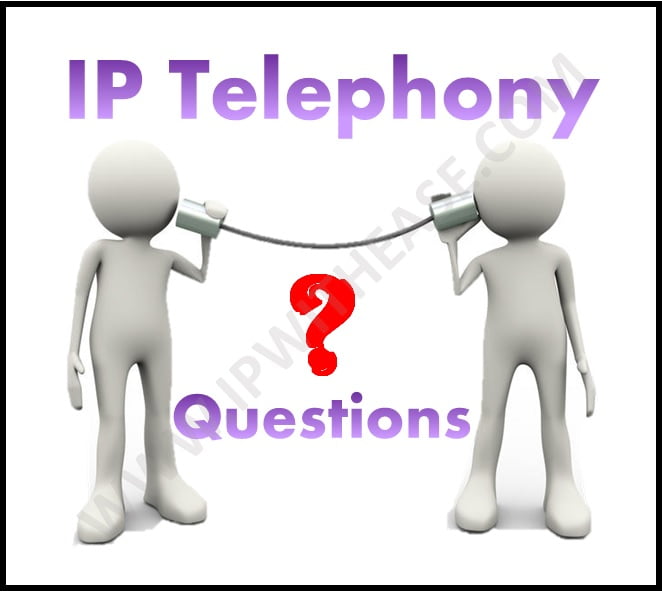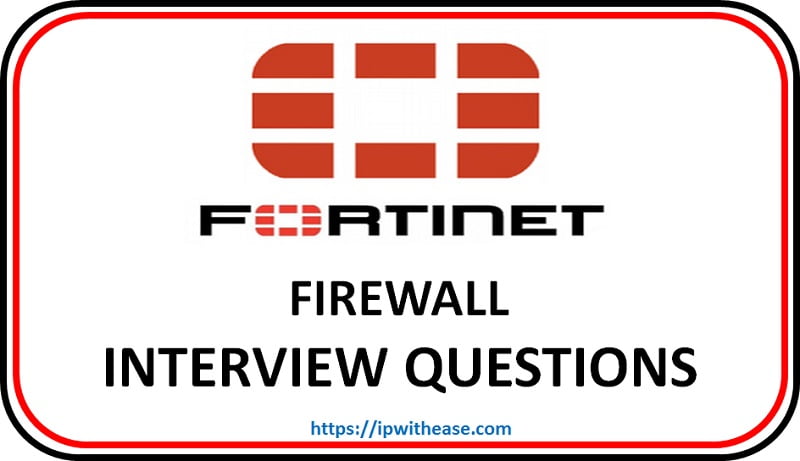Question 1 –
Which command tells the last time Cisco Router/ Switch was rebooted?
Answer 1 –
Show Version
___________________________________________________________________________________________
Question 2 –
What is Proxy ARP?
Answer 2 –
It is used to answer ARP requests by a Router. This will be done when the originating host (Desktop A) believes that a destination is local, when in fact is lies beyond router.
In the below scenario, Desktop A (192.168.1.10/16) wants to ping 192.168.2.10 .The broadcast from Desktop A reaches interface Fa0/0 of Router A. Since Router A has reachability to Desktop B IP, hence Router A responds to Desktop A with its own Mac address and proxies that Router A itself is IP 192.168.2.10.

____________________________________________________________________________________________
Question 3 –
Define “stuck in active.” ?
Answer 3 –
If a successor route (best route) fails, then the router sends a query message to its neighbor demanding a feasible successor (back-up route) and a query received by the router may be forwarded to other neighbors that could lead to a loop, as well. The wait for the response of query message is called “stuck in active” (SIA).
Another way we can put “Stuck in Active” condition is –
Router issued a query which has taken very long time (3 minutes) and still no reply from neighbor , this is known as SIA . the Router gives up and clears the connection to the router that isn’t answering, effectively restarting the neighbor session.
__________________________________________________________________________________________
Question 4 –
What is the difference between an OPPF neighbor and an OSPF adjacent neighbor ?
Answer 4 –
Neighbors are the routers that are in the same area and exchange hello packets, but not LSA information. OSPF Adjacent routers are routers that have fully exchanged their LSA information and are stable.
If OSPF state is in 2WAY/DROTHER, it means a neighbor relationship and, if the state is FULL/DR or FULL/BDR, it means that the adjacency is formed.
_______________________________________________________________________________________
Question 5 –
What is the difference between standard and extended ACL?
Answer 5 –
Answer: Standard ACLs are source-based, whereas extended ACLs are source- and destination-based. Standard ACLs can only filter layer 3 network traffic, while extended ACLs can be used to filter layer 3 and layer 4, as well.
____________________________________________________________________________________________
Question 6 –
What is the difference between layer 2 and layer 3 QoS?
Answer 6 –
L2-QoS is at the MAC layer and can be applied by using CoS (class of service) filed in the VLAN header. This will be used to prioritize traffic. Later, a QOS scheduler can use the COS filed to qualify the traffic into different QOS queues.
L3 QOS is required for IP level classification; it can be achieved through ToS (type of service) priority values—IPP (3-bit), DSCP (6-bit), which can be set in the TOS field of the IP header. This TOS will later be used by scheduling process to achieve QOS.
L2 queues are hardware-based, while L3 queues are software-based. That’s why we can modify L3 queues to meet our requirements.
____________________________________________________________________________________________
Question 7–
How does cut-through LAN switching work?
Answer 7 –
In Cut-Through LAN switching, as soon as the router receives the data frame, it will immediately send it out again and forward it to the next network segment after reading the destination address.
___________________________________________________________________________________________
Question 8 –
What is the difference between TFTP and FTP application layer protocols?
Answer 8 –
The Trivial File Transfer Protocol (TFTP) allows a local host to obtain files from a remote host but does not provide reliability or security. It uses the fundamental packet delivery services offered by UDP. The File Transfer Protocol (FTP) is the standard mechanism provided by TCP / IP for copying a file from one host to another. It uses the services offered by TCP and so is reliable and secure. It establishes two connections (virtual circuits) between the hosts, one for data transfer and another for control information.
____________________________________________________________________________________________
Question 9 –
What is difference between ARP and RARP?
Answer 9 –
The address resolution protocol (ARP) is used to associate the 32 bit IP address with the 48 bit physical address, used by a host or a router to find the physical address of another host on its network by sending a ARP query packet that includes the IP address of the receiver. The reverse address resolution protocol (RARP) allows a host to discover its Internet address when it knows only its physical address.
____________________________________________________________________________________________
Question 10 –
What is the difference between Routing and Routed protocol ?
Answer 10 –
Routed protocols are TCP and UDP, routing protocols are RIP OSPF EIGRP etc…
__________________________________________________________________________________________
Question 11 –
What is the command that is used to identify/list the port no.s used by various applications in Unix/Windows?
Answer 11 –
Netstat –a
____________________________________________________________________________________________
Question 12 –
What is the difference between a Router and Layer 3 Switch?
Answer 12 –
Major Difference is –
Layer 3 Switch – Forwarding is performed by specialized ASICs
Router – Process forwarding is hardware assisted. Packets are sent up to a software layer for treatment. There is hardware assistance(ASICS, architectures..etc) on most modern routers that make for faster forwarding
____________________________________________________________________________________________
Question 13 –
What is the difference between CSMA/CD and CSMA/CA?
Answer 13 –
CSMA/CD, or Collision Detect, retransmits data frames whenever a collision occurred. CSMA/CA, or Collision Avoidance, will first broadcast intent to send and then transmit the data. This method avoids transmission collision.
CSMA/CD technique is used in today’s LAN environment while CSMA/CA is now used in WLAN environment.
____________________________________________________________________________________________
Question 14 –
What is the range of addresses in the classes of internet addresses?
Answer 14 –
Class A 0.0.0.0 – 127.255.255.255
Class B 128.0.0.0 – 191.255.255.255
Class C 192.0.0.0 – 223.255.255.255
Class D 224.0.0.0 – 239.255.255.255
Class E 240.0.0.0 – 247.255.255.255
____________________________________________________________________________________________
Question 15 –
What is autonomous system?
Answer 15 –
It is a collection of routers under the control of a single administrative authority and that uses a common Interior Gateway Protocol.
____________________________________________________________________________________________
Question 16 –
Explain 5-4-3 rule?
Answer 16 –
In a Ethernet network, between any two points on the network, there can be no more than five network segments or four repeaters, and of those five segments only three of segments can be populated.
____________________________________________________________________________________________
Question 17 –
Can we use OSPF without backbone area?
Answer 17 –
Yes, but it will be limited to intra-area (same area) communication. By default, Inter-area communication is not possible without backbone area.
____________________________________________________________________________________________
Question 18 –
I have an IP address assigned to device (IP – 192.168.1.6 ,Subnet Mask – 255.255.255.252).What is the Network ID and Broadcast ID for this subnet.How many IPs can be assigned to hosts from this pool ?
Answer 18 –
Network ID = 192.168.1.4
Broadcast ID = 192.168.1.7
Total IPs that can be assigned from the Pool = 2 (192.168.1.5 and 192.168.1.6)
____________________________________________________________________________________________
Question 19 –
What is the one major disadvantage of a star topology?
Answer 19 –
High dependency on central HUB/Swich.Once the central hub is down, entire network is stops working.
____________________________________________________________________________________________
Question 20 –
Where do we use cross and standard cable?
Answer 20 –
Computer to computer ==> cross
Switch/hub to switch/hub ==>cross
Computer to switch/hub ==>standard
________________________________________________________________________________
FOR MORE INTERVIEW QUESTION PLEASE VISIT:
https://ipwithease.com/shop/
ABOUT THE AUTHOR

You can learn more about her on her linkedin profile – Rashmi Bhardwaj



